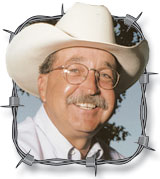Winter will soon be upon us and all of the old-timers (a group of which I’m rapidly gaining membership in) that I hang around with, are beginning to make their predictions based on “the signs.” My father observed the natural occurrences when he was alive and always seemed to put a lot of confidence in the hints that mother nature provided, but he once confided in me that the best two signs he relied on to begin the winter months were: 1) A barn full of hay, and 2) enough wood cut by Nov. 1 to get you through the worst of winters. He firmly believed that if those two goals were accomplished, even the harshest of winters wouldn’t seem so bad.
With that said, the dire predictions started way back in June with comments like, “It’s so cool and wet, we’re bound to have several feet of snow this winter.”
“Yeah,” another old-timer joined in, “We haven’t had a ‘big’ snow in several years around here, so we’re overdue. This winter is going to be a doozy!”
When August started, after the coolest and wettest July in decades, one of the old sages warned, “We’ll have a ‘big’ snow for every foggy morning this month.” And after many, many foggy mornings during the month of August, his prediction escalated to, “This will be the worst winter any of us have ever seen – you just wait and see.”
I’ve seen my Dad look at the crops of walnuts, hickory nuts and acorns on the trees to assess, “It’s gonna be a bad one, son.” He would also observe how long the leaves stayed on the trees in the fall and if they hung on longer than what he thought was normal, he’d predict, “The good Lord is trying to protect the wildlife from a rugged winter.” He also looked at the bushiness (or not) of squirrels’ tails, horses’ tails and manes, the thickness of the hair coat of the cows and a myriad of other natural phenomena to assess the situation. Most of the time he made these observations I was on the business end of an axe, splitting the winter’s supply of firewood. Actually, I think he was just using it for motivation to try and get me to work a little faster.
Many of my old friends put a lot of faith in the color and size of “wooly worms” for some reason. Since I never took an entomology course in school, I really don’t know what color they’re supposed to be, but judging from the comments of the elders, an impending cold and snowy winter can be predicted by the critters being solid black, OR solid orange, OR alternating small stripes of black and orange, OR alternating large stripes of black and orange, OR one big stripe of one of the colors in the middle. Evidently, any color or pattern in a woolly worm can be construed to mean a tough time.
Personally, I’ve never relied much on the “signs” of a rough winter, just like I don’t rely much on the long-term forecasting of the National Weather service. I’ve just seen failure too many times – like last spring’s forecast predicting a worse than normal hurricane season that turned out to be the quietest hurricane season in a quarter century. Or the almanac prediction this year that said we would be lower than normal in rainfall and above average in temperature. I needed high floatation tires and a cab heater to mow hay in June.
Oh well, the winter will be what the winter will be. Not only do I have a barn full of hay, but several round-bale yards are full as well. I don’t heat with wood anymore, but I did have both propane tanks topped off the other day. No, I’m not relying on the dire predictions of my neighbors and friends, nor am I listening to the National Weather Service. What I did was happen to be out in the woods scouting for some good deer hunting areas when I came upon a persimmon tree and proceeded to cut open a few seeds to see what was inside. After cutting open some dozen or so seeds, every single one of them contained a “SPOON”. Anyone with any sense at all knows that this is an absolutely certain, sure-fire, without question, fool-proof way to KNOW what kind of winter we’re in for. Folks, it’s going to be a humdinger.
Stay warm and stay dry.
Jerry Crownover farms in Lawrence County. He is a former professor of Agriculture Education at Missouri State University, and is an author and professional speaker. To contact Jerry, go to www.ozarksfn.com and click on 'Contact Us.'






